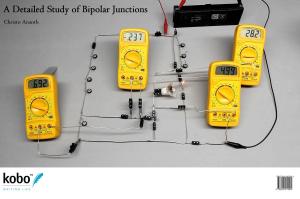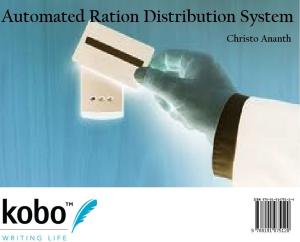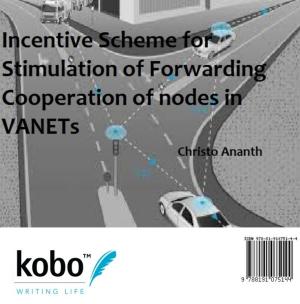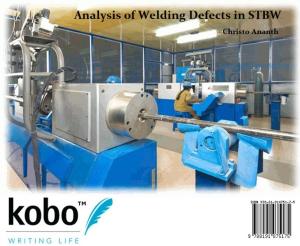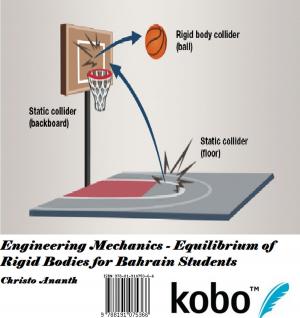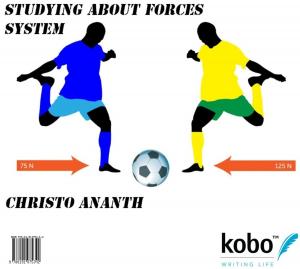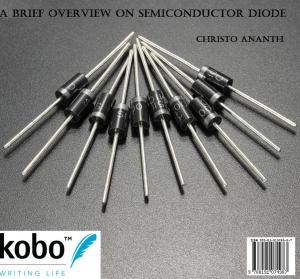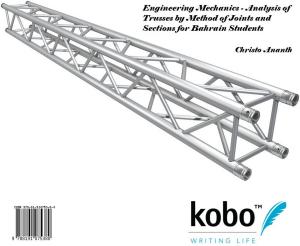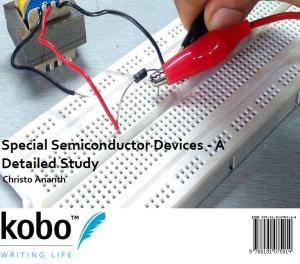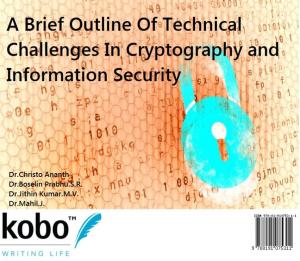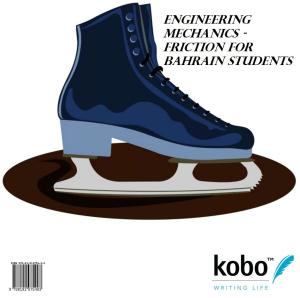A Brief Outline Of Technical Challenges In Wireless Technology
Kids, Technology, Electricity and Electronics, Computers| Author: | Christo Ananth, Ho Soon Min, Cheng Siong CHIN, P.Avirajamanjula | ISBN: | 9788191074871 |
| Publisher: | Rakuten Kobo Inc. Publishing | Publication: | September 27, 2017 |
| Imprint: | Language: | English |
| Author: | Christo Ananth, Ho Soon Min, Cheng Siong CHIN, P.Avirajamanjula |
| ISBN: | 9788191074871 |
| Publisher: | Rakuten Kobo Inc. Publishing |
| Publication: | September 27, 2017 |
| Imprint: | |
| Language: | English |
We know, correspondence implies exchange of data from source to beneficiary. In conventional communication, when source and beneficiary were situated in long separation, this exchange used to occur by interfacing source and beneficiary physically through leading wires, which would convey data as electrical signs. Any exchange of data between focuses that don't have a physical association, similar to wire or link association, would be WIRELESS COMMUNICATION. In 1897 Gugliemo Marconi was the first to show that it was conceivable to build up a ceaseless correspondence stream with the boats that were cruising in the English Channel, by methods for radio waves. From that point forward, the remote advancements that make "moving" correspondence feasible for us have developed strikingly. Today, encouraged by RF circuit manufacture and advanced exchanging systems, reasonable rapid media transmission has been to a great extent sent over the world. Living in an innovation, information driven world powers our requirement for a quick and solid remote association whether we're grinding away, at home, or in a hurry. As indicated by the CTIA – The Wireless Association, association speeds by means of portable systems dramatically increased from 2012 to 2013.The interest for remote network has soar in the most recent decade and considerably more so over the most recent couple of years. We request quick associations that can bolster the greater part of our remote needs and those of others. From home systems to work and the café down the road, we hope to be associated on a nonstop premise. CTIA reports that in 2013 versatile activity became roughly 81%. This is one of numerous pointers that our interest for availability, speed, and support is at an unequaled high and developing.
WiMAX is basically a cutting edge remote innovation that improves broadband remote get to. Along these lines, one might say that WiMAX is a progressive remote innovation that, we accept, could change the remote innovation scene impressively. The quick development of remote correspondence and its unavoidable use in all kinds of different backgrounds are changing the way we impart in all major ways. It is a standout amongst the most dynamic regions in the correspondence field today. Genuine Wireless correspondences have picked up a force in the most recent decade of twentieth century with the achievement of second Generation (2G) of advanced cell portable administrations. Overall accomplishments of Global System for Mobile Communications (GSM), Interim Standard 95 (IS-95), Personal computerized Cellular (PDC) and Advanced Mobile Phone System (IS-54/136) have empowered inescapable lifestyles for the new data and correspondence innovation time. Second Generation (2G), 2.5G, and Third Generation (3G) guidelines of portable frameworks are being sent wherever around the world. Overall Interoperability for Microwave Access (WiMAX) is a benchmarks based remote innovation for giving fast, last-mile broadband availability to homes and organizations and for versatile remote systems. WiMAX is like Wi-Fi however offers bigger data transmission, more grounded encryption, and enhanced execution over longer separations by interfacing between accepting stations that are not in the viewable pathway. Universally, WiMAX has been finding a home among developing markets that don't have a not too bad wired infrastructure.
Chapter-I deals with Types of Services associated with Wireless Technology. Chapter-II deals with a brief overview of Wireless Propagation mechanisms. Chapter-III explains the working principle of different types of Wireless Transceivers. Chapter-IV gives a brief outline of Signal Processing in Wireless Systems. Chapter-V elaborates various advanced Transceiver Schemes.
We know, correspondence implies exchange of data from source to beneficiary. In conventional communication, when source and beneficiary were situated in long separation, this exchange used to occur by interfacing source and beneficiary physically through leading wires, which would convey data as electrical signs. Any exchange of data between focuses that don't have a physical association, similar to wire or link association, would be WIRELESS COMMUNICATION. In 1897 Gugliemo Marconi was the first to show that it was conceivable to build up a ceaseless correspondence stream with the boats that were cruising in the English Channel, by methods for radio waves. From that point forward, the remote advancements that make "moving" correspondence feasible for us have developed strikingly. Today, encouraged by RF circuit manufacture and advanced exchanging systems, reasonable rapid media transmission has been to a great extent sent over the world. Living in an innovation, information driven world powers our requirement for a quick and solid remote association whether we're grinding away, at home, or in a hurry. As indicated by the CTIA – The Wireless Association, association speeds by means of portable systems dramatically increased from 2012 to 2013.The interest for remote network has soar in the most recent decade and considerably more so over the most recent couple of years. We request quick associations that can bolster the greater part of our remote needs and those of others. From home systems to work and the café down the road, we hope to be associated on a nonstop premise. CTIA reports that in 2013 versatile activity became roughly 81%. This is one of numerous pointers that our interest for availability, speed, and support is at an unequaled high and developing.
WiMAX is basically a cutting edge remote innovation that improves broadband remote get to. Along these lines, one might say that WiMAX is a progressive remote innovation that, we accept, could change the remote innovation scene impressively. The quick development of remote correspondence and its unavoidable use in all kinds of different backgrounds are changing the way we impart in all major ways. It is a standout amongst the most dynamic regions in the correspondence field today. Genuine Wireless correspondences have picked up a force in the most recent decade of twentieth century with the achievement of second Generation (2G) of advanced cell portable administrations. Overall accomplishments of Global System for Mobile Communications (GSM), Interim Standard 95 (IS-95), Personal computerized Cellular (PDC) and Advanced Mobile Phone System (IS-54/136) have empowered inescapable lifestyles for the new data and correspondence innovation time. Second Generation (2G), 2.5G, and Third Generation (3G) guidelines of portable frameworks are being sent wherever around the world. Overall Interoperability for Microwave Access (WiMAX) is a benchmarks based remote innovation for giving fast, last-mile broadband availability to homes and organizations and for versatile remote systems. WiMAX is like Wi-Fi however offers bigger data transmission, more grounded encryption, and enhanced execution over longer separations by interfacing between accepting stations that are not in the viewable pathway. Universally, WiMAX has been finding a home among developing markets that don't have a not too bad wired infrastructure.
Chapter-I deals with Types of Services associated with Wireless Technology. Chapter-II deals with a brief overview of Wireless Propagation mechanisms. Chapter-III explains the working principle of different types of Wireless Transceivers. Chapter-IV gives a brief outline of Signal Processing in Wireless Systems. Chapter-V elaborates various advanced Transceiver Schemes.

